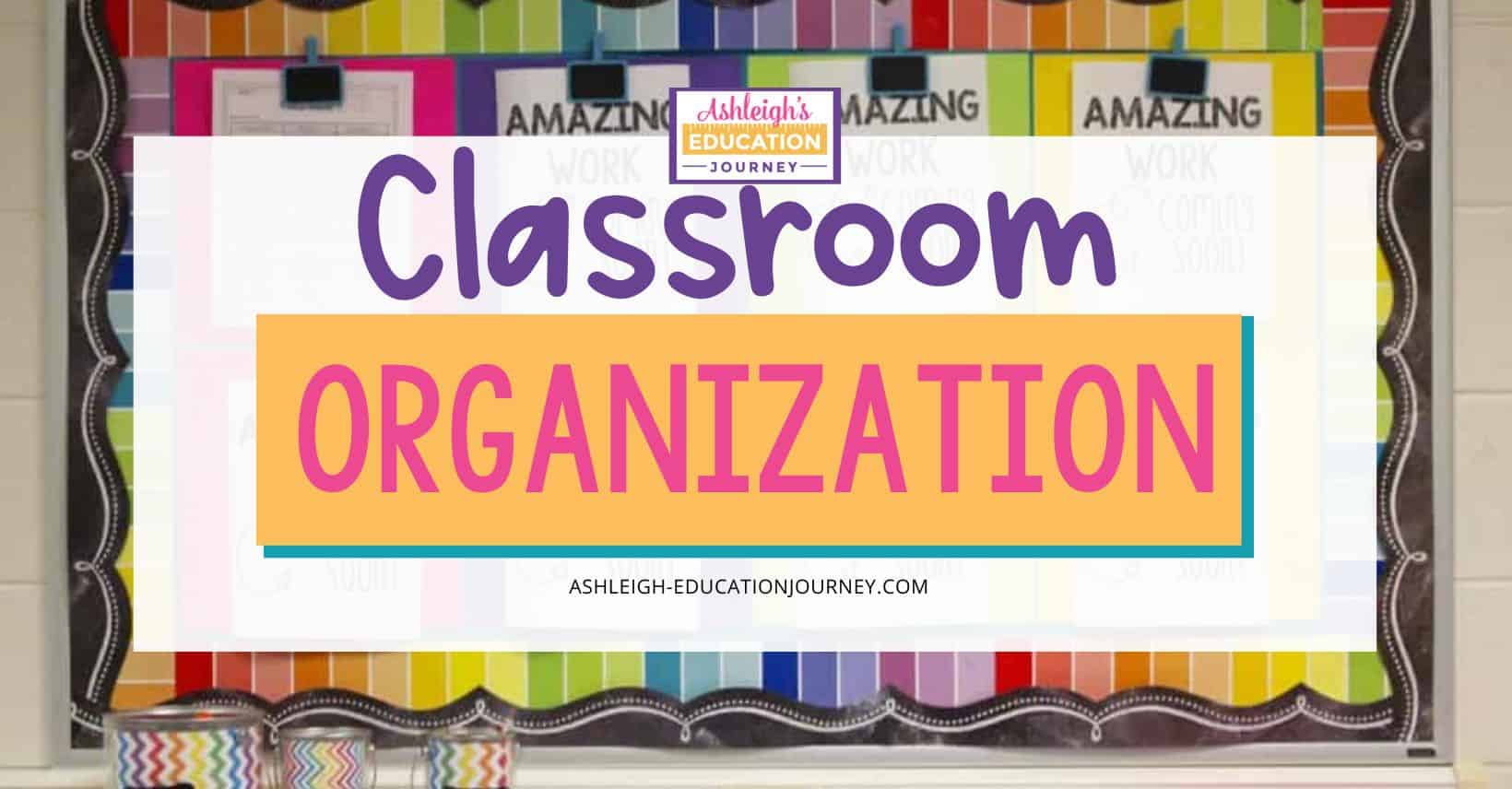
Classroom organization plays an enormous role in classroom management and ultimately saves you time and energy. This post shares a few classroom organization tricks of the trade that I’ve picked up over the years that makes your classroom run smoothly. I don’t pretend to be an excellent classroom decorator, but this that’s not the purpose of this post – I’ll leave that to the experts. Instead, I hope to share a few ways to simplify and streamline often time-consuming aspects of classroom organization.
Bulletin Boards
Bulletin boards play a role in classroom organization. I love the idea of bulletin boards much more than I like actually making them. Once I get a bulletin board set-up, I have no desire to take it down anytime soon. I like to display bulletin boards that can be used all year, and I like for my bulletin boards to be interactive. Two of my best bulletin board tips are two use fabric and thumb tacks. Using fabric makes it so much easier to avoid the dreaded bubble. Fabric is also more forgiving when it comes to holes from staplers and thumb tacks. To position things on my bulletin board, I use thumb tacks, because it’s much easier to move things around. I don’t staple until everything is ready, centered, and where I want it to be.
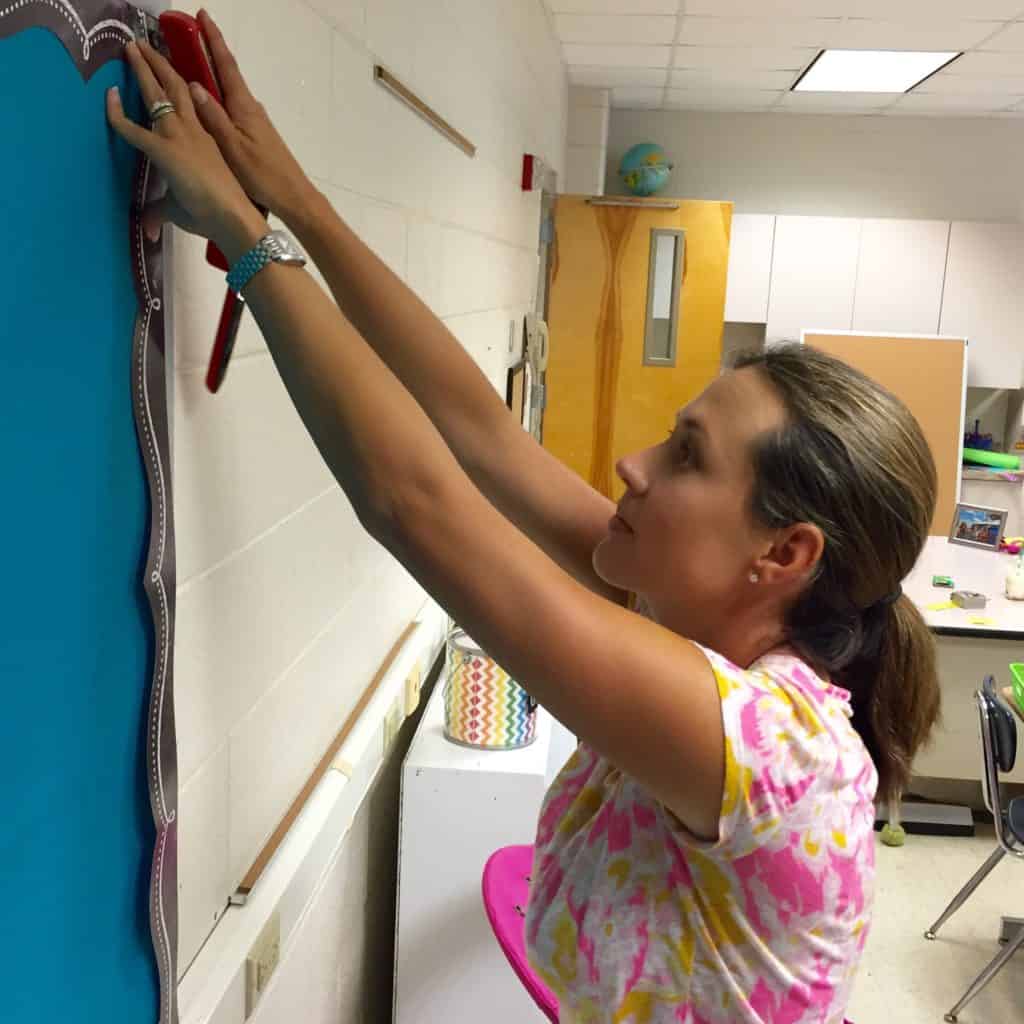
I like to have at least one bulletin board for displaying student work. This is an idea I discovered from Teaching in High Heels. I clip student work to the board throughout the year and try to regularly switch work samples out for new work samples. This certainly simplifies classroom organization!
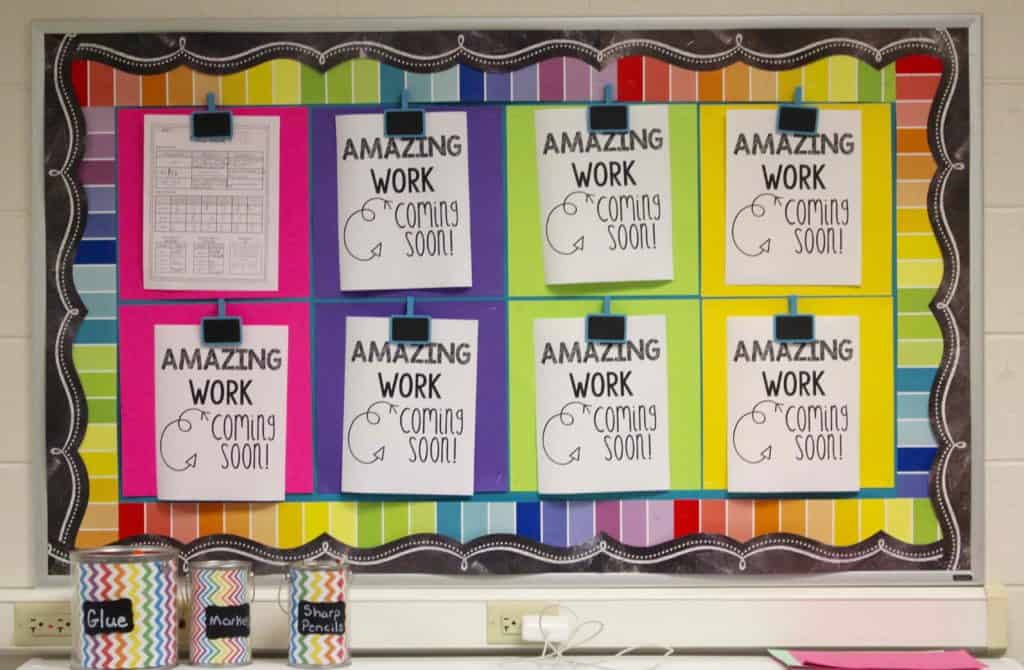
I also use one bulletin board for a Focus Wall. Here, I display my standards, essential questions, and essential vocabulary on my focus wall. You can read more about Focus Walls here. While this may appear to be a decoration tip, sometimes simplifying goes along with classroom organization.
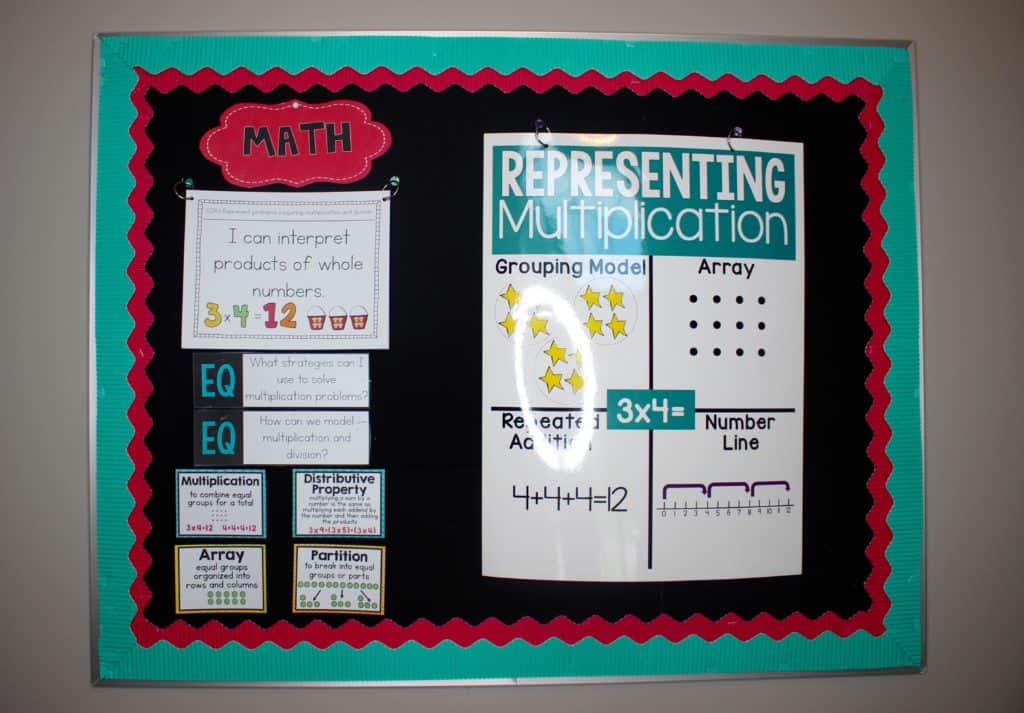
Student Supplies
Classroom organization includes having a plan for student supplies. The student supplies you need will vary depending on the grade level and subjects you teach. I don’t need a lot of binders, notebooks, and folders, but I do use a ton of crayons, markers, colored pencils, and glue. When I departmentalized in a two-way switch, I placed baskets inside my students’ desks. My homeroom kept their things in the basket on the left, and my partner’s homeroom kept their things in the right basket. While your classroom organization may be on point, students will likely need help.
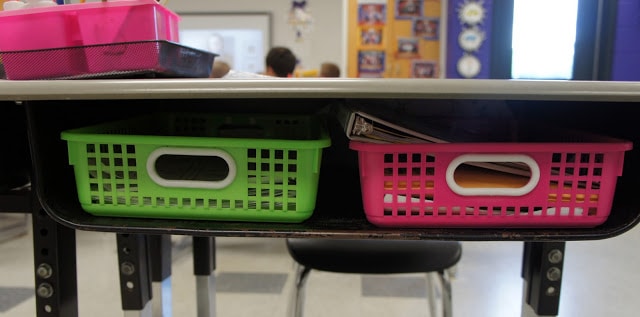
I’m on the fence about community supplies. If a student has something special, I never force them to use that/those items as community supply items. For the past several years, I’ve used caddies like the one below to organize our supplies. It’s very effective, but it gets SO messy. We also run out of nice crayons and markers WAY too soon. This year I’m storing the extras that we don’t use every single day in a pencil case that is labeled with each table number. I’ll just pass them out whenever we begin the activity. I’m hoping this helps keep things a little neater.
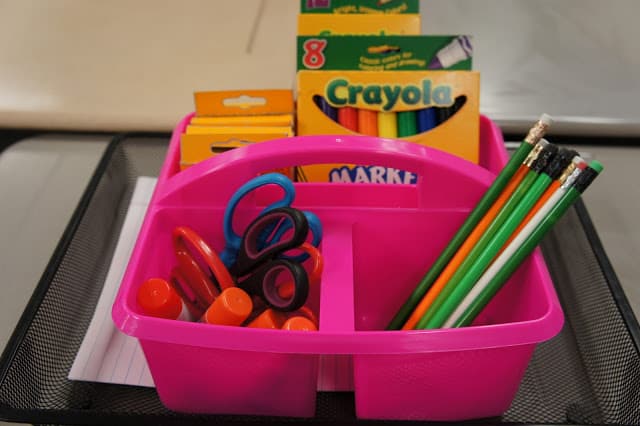
This year I will be teaching math to three groups of students, so my desk trays aren’t going to do the trick. I’m using my storage drawers for my third group of students. I have one drawer for each table, and when the class comes on the room, students will take their drawer to the table. They will return it when we switch classes.

Since we do switch classes, I don’t place a name tag on top of students’ desks. Instead, I write it on a label and attach the label to the side of the desks with magnetic tape. I place our Interchangeable Desktop Helpers on top of students’ desks for them to reference throughout the year.

Classroom Organization – Technology
While I am beyond thrilled that my students have access to Chromebooks, organizing them isn’t always easy. I had to have a designated area to store and charge my Chromebooks. Since I didn’t want to give up valuable classroom space, I purchased two Belkin storage devices. I won’t say that I love them, but I do like them. I’m able to place my Chromebooks on a counter and have them all charge at once. However, the cords get SO messy throughout the year. I now have an IT Specialist (student volunteer) that regularly tidies up the cords for me.

Make-up Work
I keep my make-up work super simple. I do not require all students to make up all work that they missed. This is something I handle on a case by case basis, because there are some assignments that would not be effective outside the context of the actual lesson. I try to never give a child an assignment unless there is a clear need and purpose for that assignment. However, when I do have an assignment that must be completed, I write the student’s name on the paper on the paper and place it in this file folder. The file folder is magnetic, and I keep it on our dry erase board.
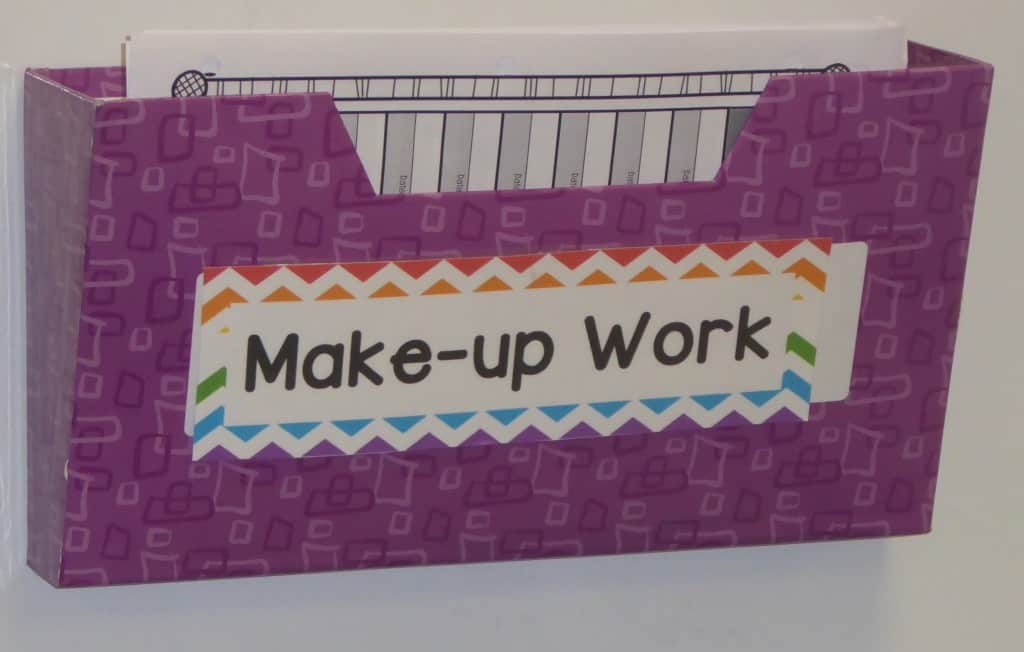
Classroom Organization Management
I am a huge fan of 3M hooks, as I use them all of the time. I hang my restroom log and behavior log on a clipboard that hangs on a 3M hook. If there is something I want to be able to keep up with, I probably have a hook and/or label for it.
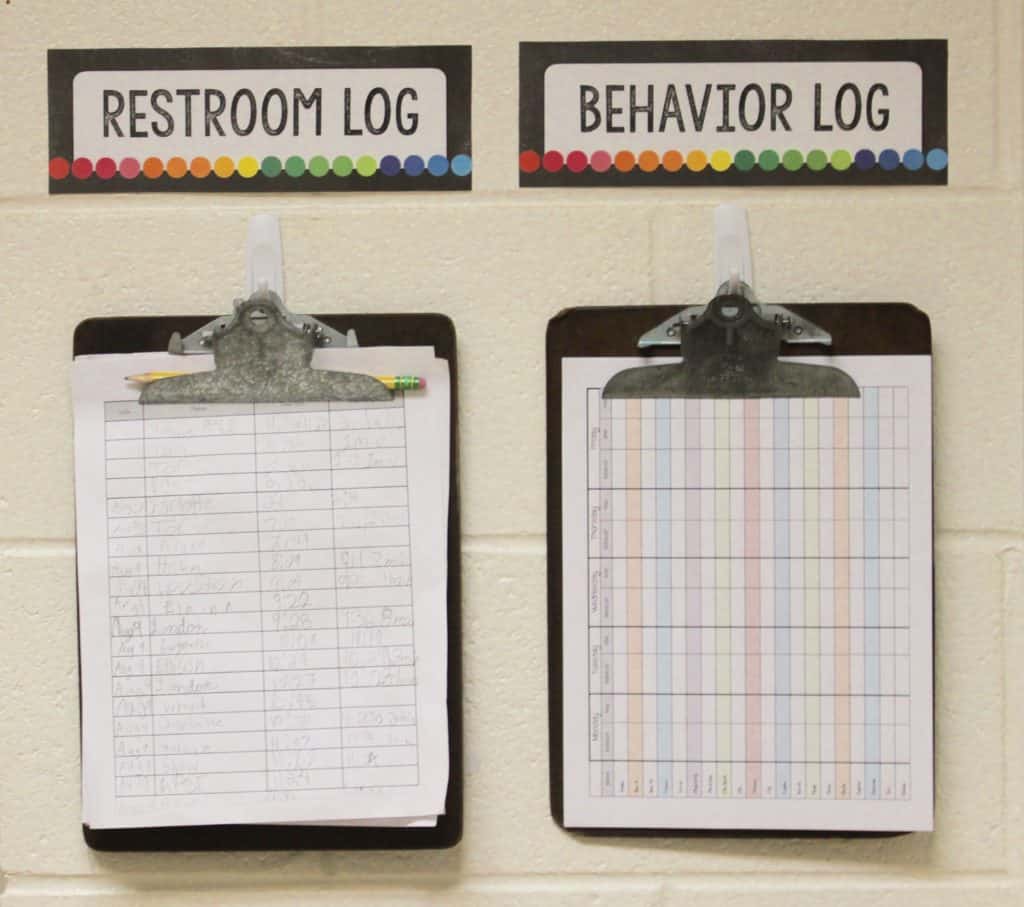
I use a section of my dry erase board as a weekly calendar. I write due dates, events, and notes on the calendar, so that students can’t use the excuse of “I didn’t know…”. My students reference the calendar all of the time, and I love that it’s dry erase, so it’s easy to change.
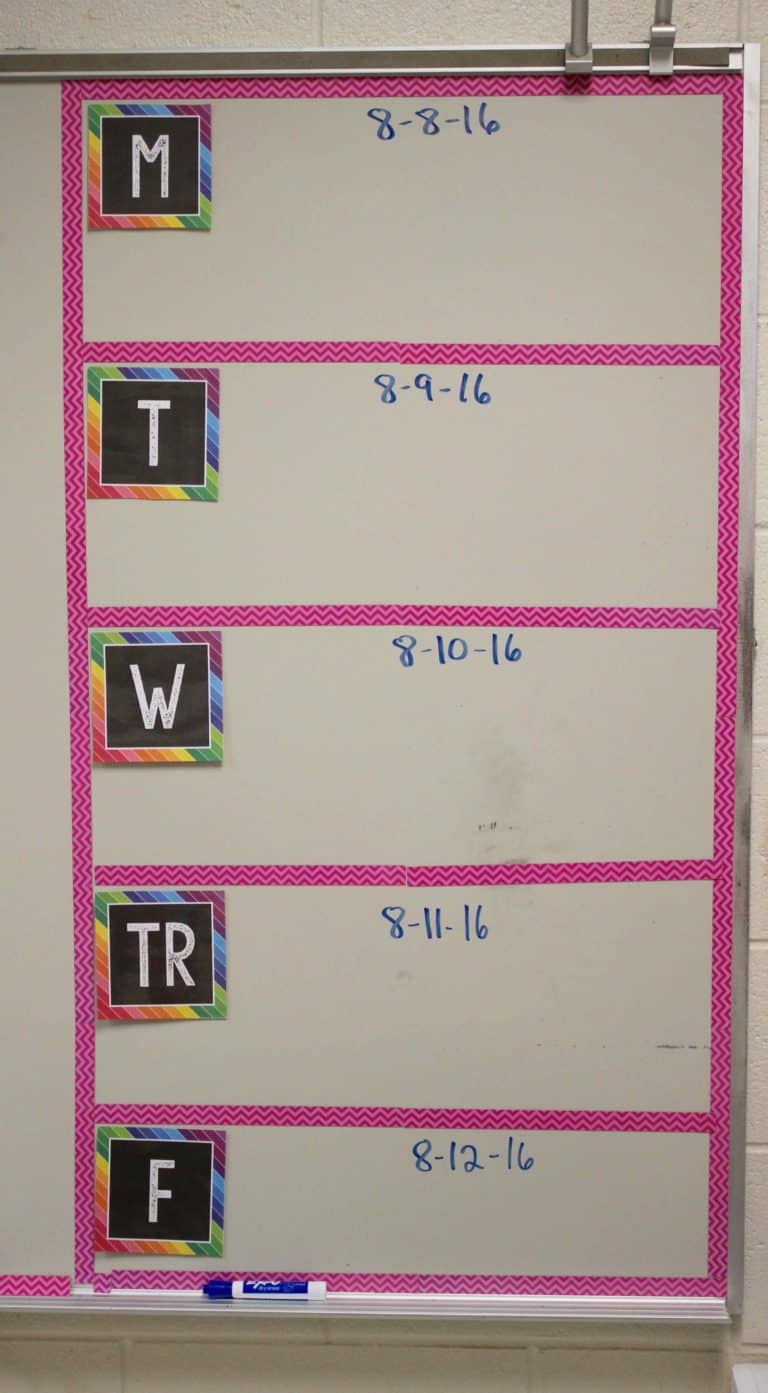
Classroom Jobs
I’m not one to use a lot of wall space or bulletin board space for classroom jobs, especially since I teach upper elementary. Instead I use hooks (again) and have daily helpers. The helpers are responsible for ALL the chores and jobs for the day. At the end of the day the helpers switch from their name to the next, so I rarely do anything with this. My students keep up with everything.
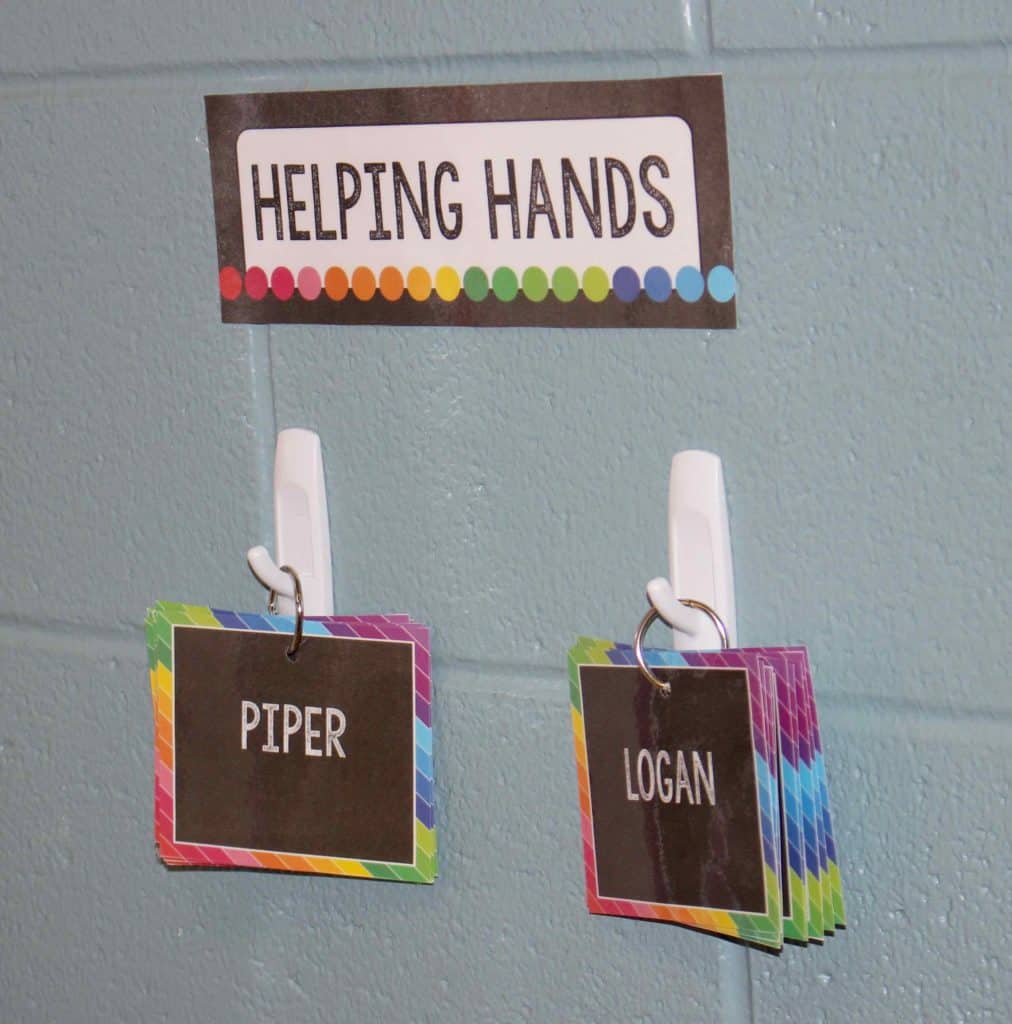
Centers and Manipulatives
Center organization is a whole other blog post that you can read about here. I’m pretty selective on the center or station activities that I actually have out and available to my students. There are always a handful of activities for our current topic, as well as a few review activities from different units, but I don’t like to have too much out at a time. I organize these into different tubs that I bought from Really Good Stuff. They were pricy but worth every penny. I LOVE being able to stack things neatly! Each tub is given a number, and the number correlates to which activity students complete and where they complete the activity. Numbering the tubs makes them very interchangeable, so when I want to change station activities, I don’t have to relabel anything. Inside my station tubs is everything my students need to complete the station(s). I occasionally like to include sleeves for recording sheets to save on paper and copies, so I have included wipes and dry erase markers in any storage tub that has a recording sheet. If the activity or game requires any manipulatives, I store those in the tub as well.
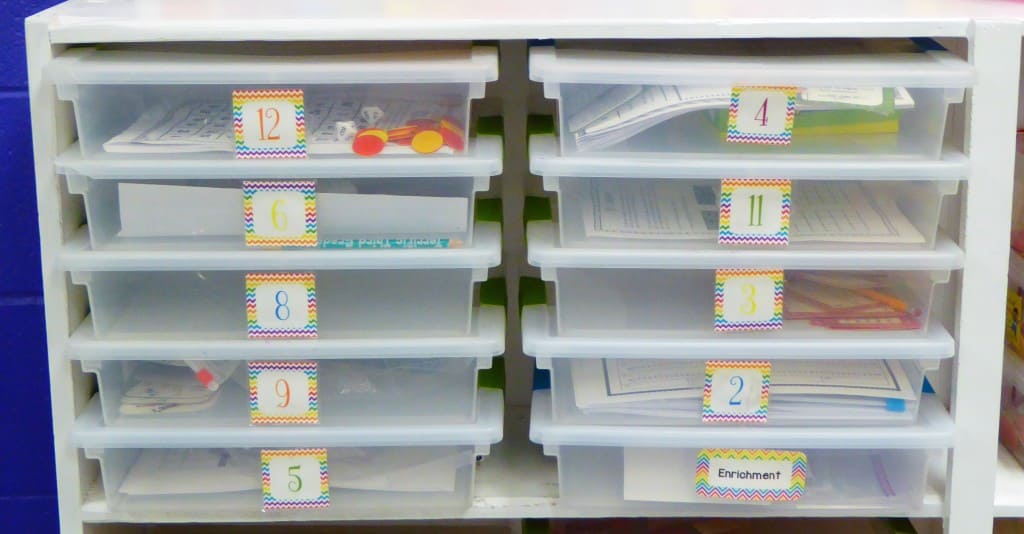
I’ve always tried to use my time with my students as efficiently as possible. Any random moment of down time is usually when I see student misbehavior, and I feel like I’m losing out on valuable instruction time. I’m always looking for ways to streamline procedures to keep my day running as smoothly as possible. One simple strategy that I love is how I organize my manipulatives. I used to store each type of manipulative in one large tub, which worked okay. I would just dump a handful out at each table for my students to distribute to each other.
Classroom Organization – Manipulatives
Then a couple of years ago, I had a summer of classroom organization, and I now store my math manipulatives in several small containers. I have one container for each group, so whenever we need our manipulatives, I don’t have to do anything! One person from each group gets the manipulatives from the bookshelf for their table, so that there’s no need for me to stop instruction while I pass everything out. I know it sounds so basic, but you wouldn’t believe how much smoother the whole process has become!

Classroom Organization Anchor Charts
I use a combination of my pre-made anchor charts and anchor charts generated with my students. I like creating them with my students, but when you teach the same subject to three classes, it gets a little problematic for me. My anchor charts are on hooks throughout the classroom. I group the anchor charts by unit, and students can access the anchor charts anytime they need to access it. You can find the anchor charts here.
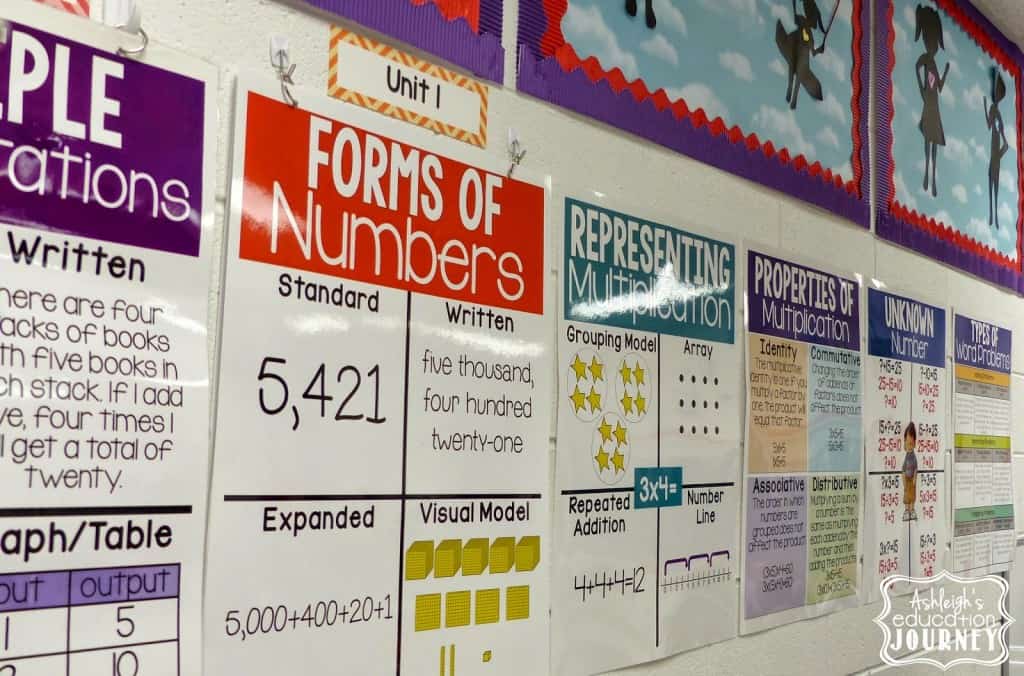
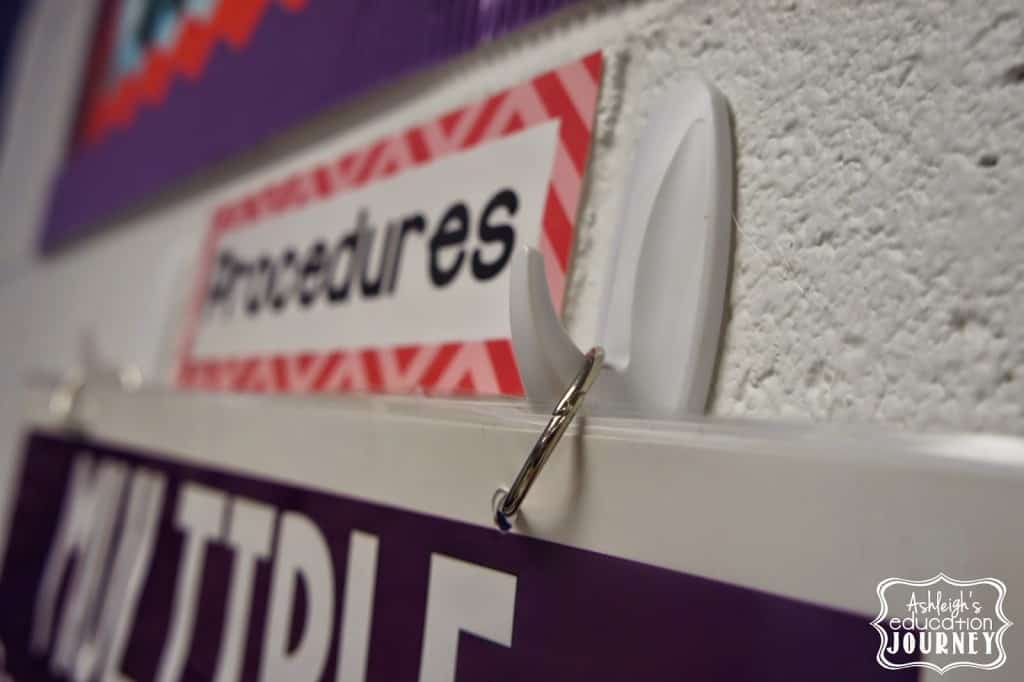
Classroom Organization – Mentor Texts
I try to keep everything in my classroom accessible to students, so the things that are in my cabinets are resources for ME, not my students. For example, I keep my reading mentor texts in a cabinet, so I can easily find the books I need for each lesson.

Hopefully you’ll find a few ideas you can use in this post! What are your favorite strategies for classroom organization?
If you’d like to read about how I organize and plan for the year’s instruction, be sure to read this post on planning for the year.

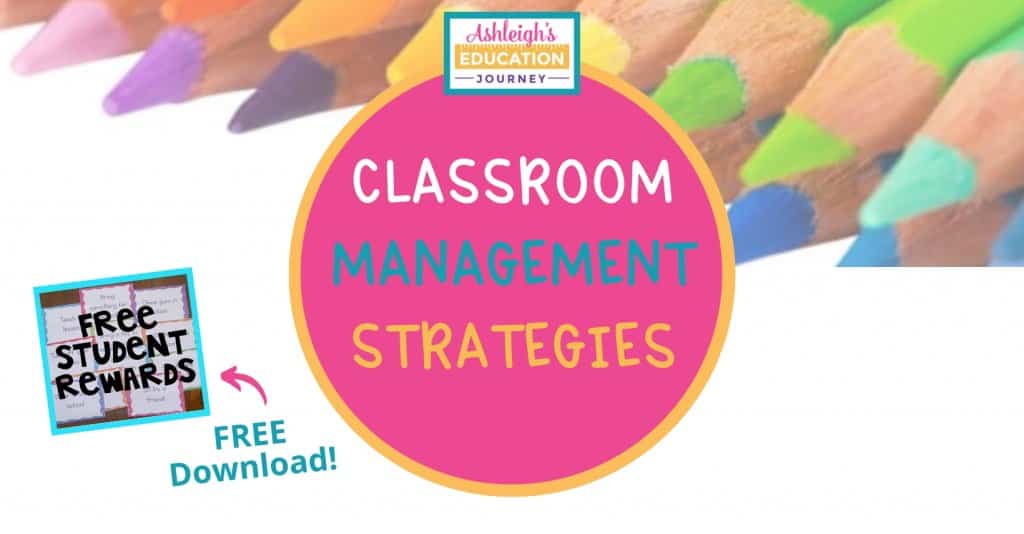
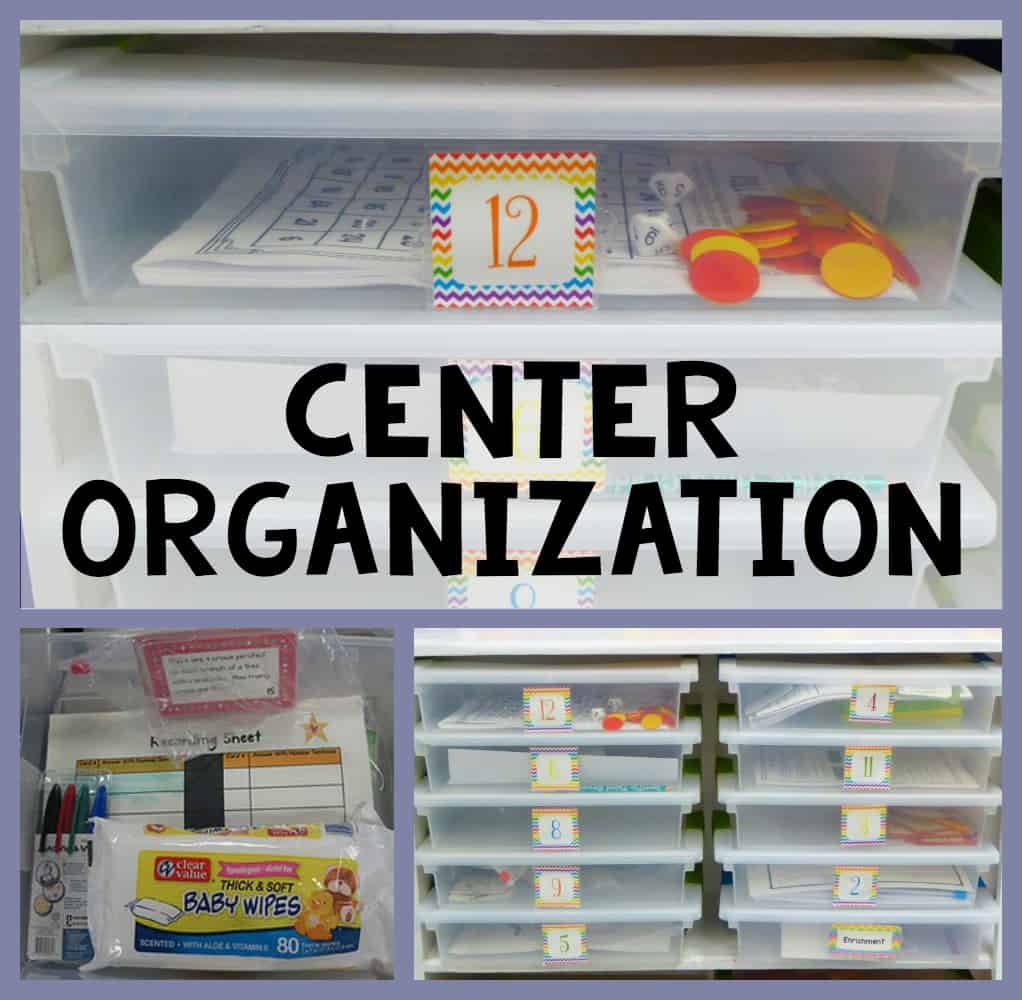
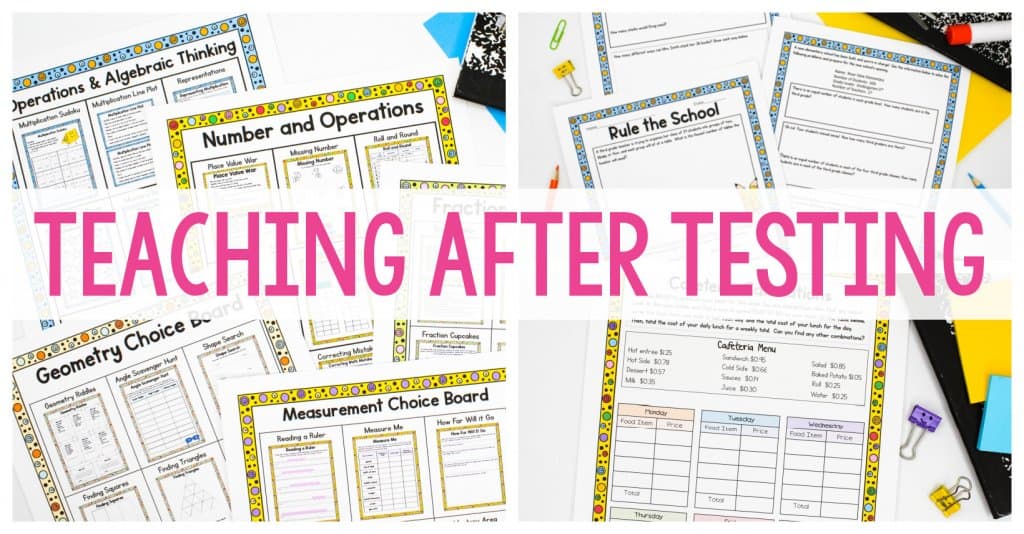
This was packed with lots of good information. I was wondering where can I find all of these labels?
I bought them from SchoolGirlStyle.com
It’s the template, and I filled in the rest.
I appreciate your wisdom on organization. However, I must point out that you are using apostrophes for plurals which are not showing ownership. Please check your labels for manipulatives. No apostrophes needed. Thanks.
I never noticed that before. It’s actually just the font that adds little sparkles in the writing, not an actual apostrophe. I’ve since changed fonts.
Love this! Where did you purchase the baskets that are in the desks?
I got them from Really Good Stuff. However, I’ve also seen them at the Dollar Tree.